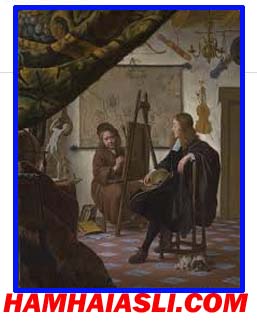The Art of Painting: Exploring Techniques, Styles

# The Art of Painting: Exploring Techniques, Styles, and InfluencesPainting, one of the oldest forms of artistic expression, captivates audiences with its ability to convey emotion, tell stories, and explore the human experience. This article delves into various painting techniques, styles, and the influential artists who have shaped the medium.
The Basics of Painting Techniques##
# 1. BrushworkBrushwork is a fundamental aspect of painting that affects the texture and visual appeal of the artwork. Different strokes can evoke varying emotions and atmospheres. Techniques include:- *
*Wet-on-Wet:*
* This technique involves applying wet paint onto wet surfaces, creating soft edges and blending colors seamlessly.-
**Dry Brush:**
Using a dry brush with minimal paint produces a scratchy texture, perfect for adding fine details.- *
*Impasto:** This involves applying thick layers of paint, creating a three-dimensional effect on the canvas.
2. Color MixingUnderstanding color theory is essential for any painter. Color mixing involves combining primary colors to create secondary and tertiary colors, enabling artists to achieve desired hues and tones. Key concepts include:- **
Complementary Colors:** Colors opposite each other on the color wheel that, when mixed, can create a neutral tone.- **Analogous Colors:**
Colors that are next to each other on the color wheel, creating harmony in a painting.## Exploring Different Painting Styles### 1. RealismRealism aims to depict subjects as they appear in everyday life.
This style focuses on detail and accuracy, often portraying scenes of ordinary people and situations. Notable realist artists include Gustave Courbet and Jean-François Millet.### 2. ImpressionismEmerging in the late 19th century, Impressionism emphasizes capturing light and movement. Artists like Claude Monet and Edgar Degas used loose brushwork and vibrant colors to convey the fleeting effects of light. This style often features outdoor scenes and everyday moments.##
# 3. AbstractAbstract painting departs from realistic representation, focusing instead on colors, shapes, and forms. Artists like Wassily Kandinsky and Jackson Pollock explored emotion and sensation through non-representational art, challenging viewers to interpret meaning on their terms.##
# 4. SurrealismSurrealism combines dreamlike imagery with the subconscious mind, often juxtaposing unexpected elements. Salvador Dalí and René Magritte are key figures in this movement, creating works that provoke thought and evoke the bizarre aspects of human existence.## Influential Artists and Their Impact###
1. Leonardo da VinciRenowned for his mastery of techniques such as sfumato and chiaroscuro, da Vinci’s works, like the “Mona Lisa” and “The Last Supper,” showcase his understanding of light, shadow, and human anatomy. His attention to detail and psychological depth has influenced countless artists.###
2. Vincent van GoghVan Gogh’s emotive use of color and brushwork revolutionized post-impressionism. His iconic paintings, such as “Starry Night” and “Sunflowers,” reflect his tumultuous emotions and unique perspective on life, inspiring generations of artists to explore their inner worlds.#
## 3. Frida KahloKahlo’s work is deeply personal, often exploring themes of identity, pain, and feminism. Her vibrant self-portraits and symbolic imagery challenge societal norms and invite viewers to engage with her complex narrative.#
# The Role of Painting in SocietyPainting serves as a powerful medium for social commentary and cultural reflection. Throughout history, artists have used their work to address political issues, societal changes, and personal struggles. For example:- **
Political Art:*
* Artists like Pablo Picasso, with his work “Guernica,” comment on war and suffering, influencing public perception and discourse.- **Cultural Representation:**
Contemporary artists are increasingly using their platforms to represent marginalized voices, fostering inclusivity and diversity in the art world.#
# Conclusion
The art of painting is a dynamic and evolving medium that continues to inspire and challenge both artists and viewers. From traditional techniques to modern styles, painting encompasses a vast array of expressions and narratives. As we explore the works of influential artists and the impact of societal changes, we recognize that painting remains a vital form of communication, reflecting the complexities of the human experience.
### Tags- Painting Techniques- Art Styles- Realism- Impressionism- Abstract Art- Surrealism- Influential Artists- Art History- Cultural Commentary- Emotional ExpressionBy understanding the techniques and styles of painting, we can appreciate the depth and diversity of this timeless art form.
